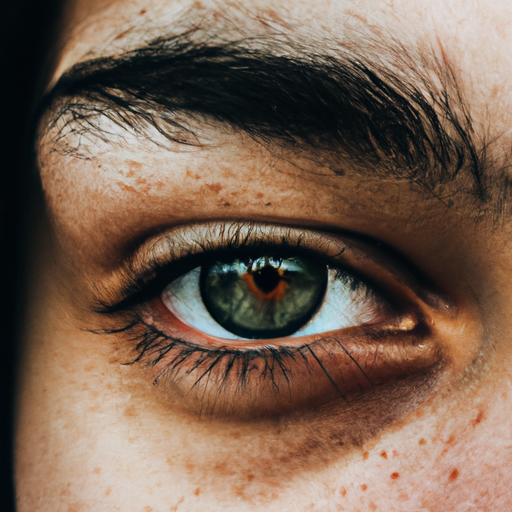As a medical professional, I often encounter patients who are concerned about the dark circles under their eyes. These shadows can make a person look tired, older, and less vibrant. However, it’s important to understand that these dark circles are not usually a sign of serious illness and can be treated effectively. This article will provide a comprehensive guide to understanding and treating dark circles under your eyes.
Firstly, it’s crucial to understand what causes these dark circles. They occur when the blood vessels under the skin around your eyes become more visible. This can happen due to various reasons such as aging, lack of sleep, stress, poor diet, and certain lifestyle habits like smoking and excessive alcohol consumption. Genetics also play a significant role; if your parents have dark circles, you’re more likely to have them too.
Now that we know the causes, let’s move on to the treatment options. The good news is that there are several ways to reduce the appearance of dark circles.
1. Adequate Sleep: Lack of sleep is one of the most common causes of dark circles. Therefore, ensuring that you get an adequate amount of sleep (7-9 hours for adults) can help reduce their appearance.
2. Healthy Diet: A diet rich in vitamins (especially Vitamin C and E), iron, and antioxidants can improve your skin’s health and reduce dark circles.
3. Hydration: Drinking plenty of water helps in flushing out toxins from the body and maintaining the skin’s elasticity, which can prevent the formation of dark circles.
4. Quit Smoking and Limit Alcohol: Both smoking and excessive alcohol consumption can worsen dark circles. Therefore, it’s advisable to quit smoking and limit alcohol intake.
5. Cold Compress: Applying a cold compress can help constrict the blood vessels under the eyes, reducing their visibility and hence the appearance of dark circles.
6. Eye Creams: There are several over-the-counter creams available that can help reduce dark circles. Look for creams containing ingredients like retinol, Vitamin C, and caffeine.
7. Medical Treatments: If the dark circles are severe and persistent, medical treatments like chemical peels, laser therapy, and fillers can help. These treatments should be performed by a qualified dermatologist.
8. Sun Protection: Overexposure to the sun can worsen dark circles. Therefore, it’s essential to protect your skin from the sun by wearing sunglasses and applying sunscreen.
9. Limit Screen Time: Prolonged exposure to screens (like computers and smartphones) can strain your eyes and worsen dark circles. Therefore, it’s advisable to limit screen time and take regular breaks.
10. Regular Exercise: Regular physical activity improves blood circulation, which can help reduce the appearance of dark circles.
In conclusion, while dark circles under your eyes can be a cosmetic concern, they are usually not a sign of a serious health issue. By understanding their causes and implementing the above-mentioned lifestyle changes and treatments, you can effectively reduce their appearance. However, if the dark circles persist or are accompanied by other symptoms like swelling or pain, it’s advisable to consult a healthcare professional. Remember, every individual is unique, and what works for one person may not work for another. Therefore, it’s essential to find a treatment plan that works best for you.




